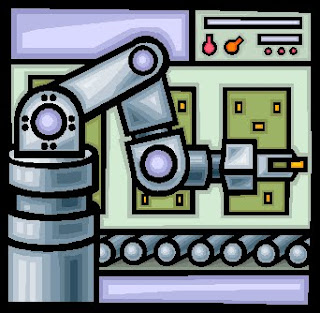Weekly commentary on world affairs and topical issues with a focus on sustainability, resilience and how to make the transformation to a sustainable world society.
Monday, 23 April 2012
The Third Industrial Revolution
The first industrial revolution began in 18th century Britain when weavers working from home were replaced by the cotton mills. The second industrial revolution of the early 20th century came about with the introduction of the production line and mass production pioneered by Henry Ford. The Economist reports these two revolutions as ‘making people richer and more urban’. In the same special report the Economist newspaper looks forward to a third industrial revolution as manufacturing goes digital. It is interesting to compare an economist’s view of this third industrial revolution with the sustainability perspective.
Industrial revolutions bring progress but also problems. The first industrial revolution brought greater efficiency and wealth to mill owners, but the downside was terrible working conditions and ill-health for the workers. The second industrial revolution further eroded the quality of life by requiring workers to behave like robots to fulfil their part in the factory machine. To the economist these consequences are the price of progress. Of course, the sensible reaction to such down-side effects is not to oppose progress to make further change to mitigate them. Many factories now are cleaner than some of our hospitals and many of the robot-like tasks on the production line are indeed carried out by robots.
The third industrial revolution may be driven by the capabilities of highly versatile robots and new automated processes such as digital three-dimensional printing, but it will also have problems that need mitigating. The first of these is increased environmental damage, ushered in by the first industrial revolution, which continues to be a negative consequence of industrialisation today. Humans have always had an impact on the environment but industrialisation gave humans the ability to cause changes to the natural environment on a scale that has planetary significance. We have still to accept the responsibility this power brings. End-of-pipe pollution is being tackled but the demand for input resources dug from the ground or harvested from the forests is growing immensely. The environmental impact of industrialisation, as we enter the era of the third industrial revolution, is now a clear and present threat to society.
The second problem is jobs. It is becoming possible to automate almost every aspect of the industrial machine. To the economist this brings efficiency. We can all be richer and consume more as the robots scurry around making all the stuff we need. As jobs evaporate, economists argue for stimulation of the economy to boost demand, but if manufacturing is entirely automated increased output does not provide more jobs. As we search for mitigating these down-side effects, politicians will be searching for ways to engage the population in activities that keep them content and fulfilled. This requires policy that delivers a cohesive society which is easier to craft under the paradigm of sustainability.
The third problem is a lack of real foresight. The key players in each industrial revolution play out their roles focussing on the economic outcomes leaving others to legislate to deal with the unintended consequences. It is perfectly possible to look forward to how industry should change as one part of building a sustainable world society. This means that either the politicians legislate in advance of the revolution (an unlikely event) or that industry works out how to meet the legislation even before the politicians have realised it is needed.
The third industrial revolution will be driven by technological advances and economic opportunities, but the clever players will future-proof their corporate success by putting sustainability to underpin strategy. Preparing for the third industrial revolution requires a deep fundamental rethink.
Subscribe to:
Post Comments (Atom)

No comments:
Post a Comment